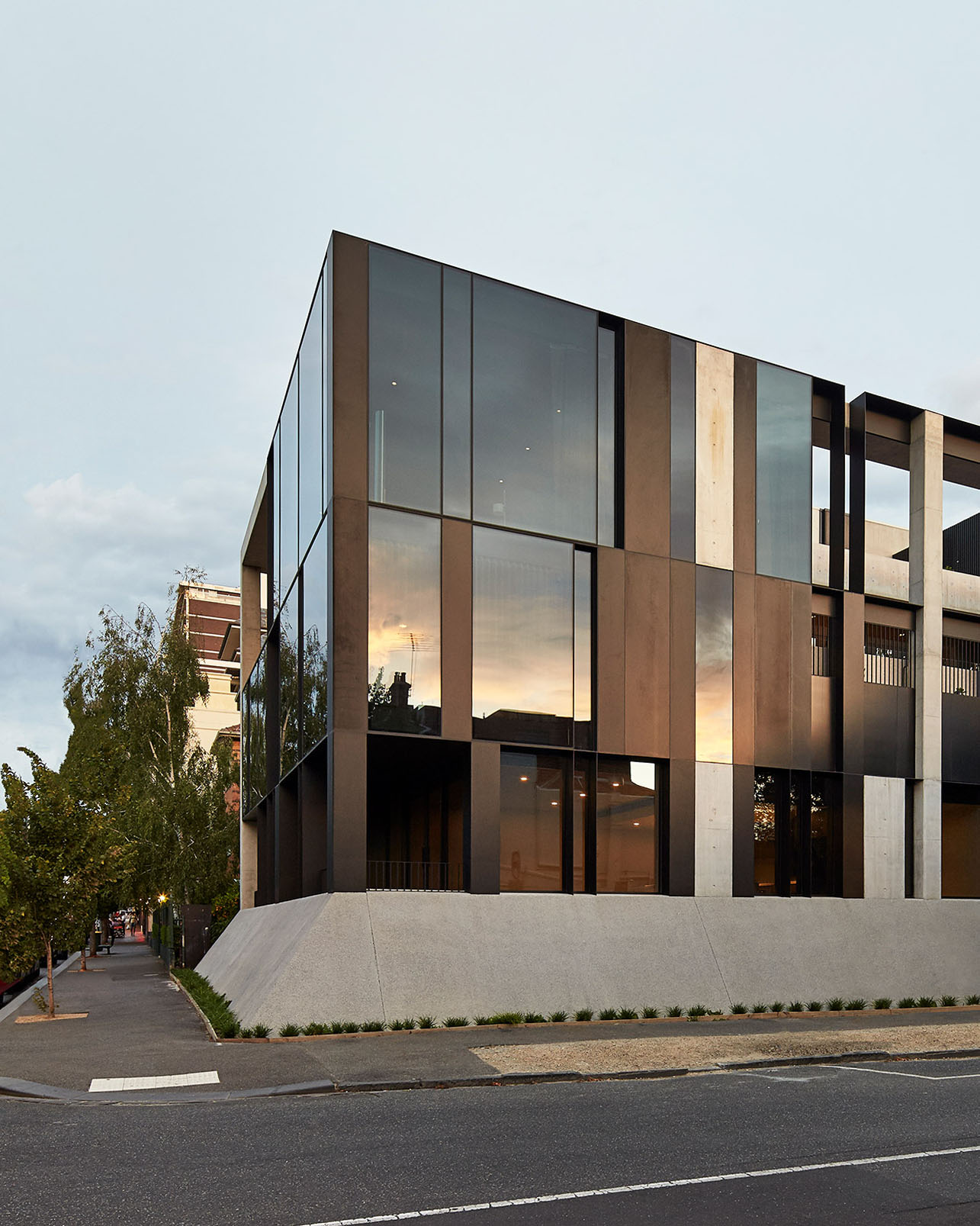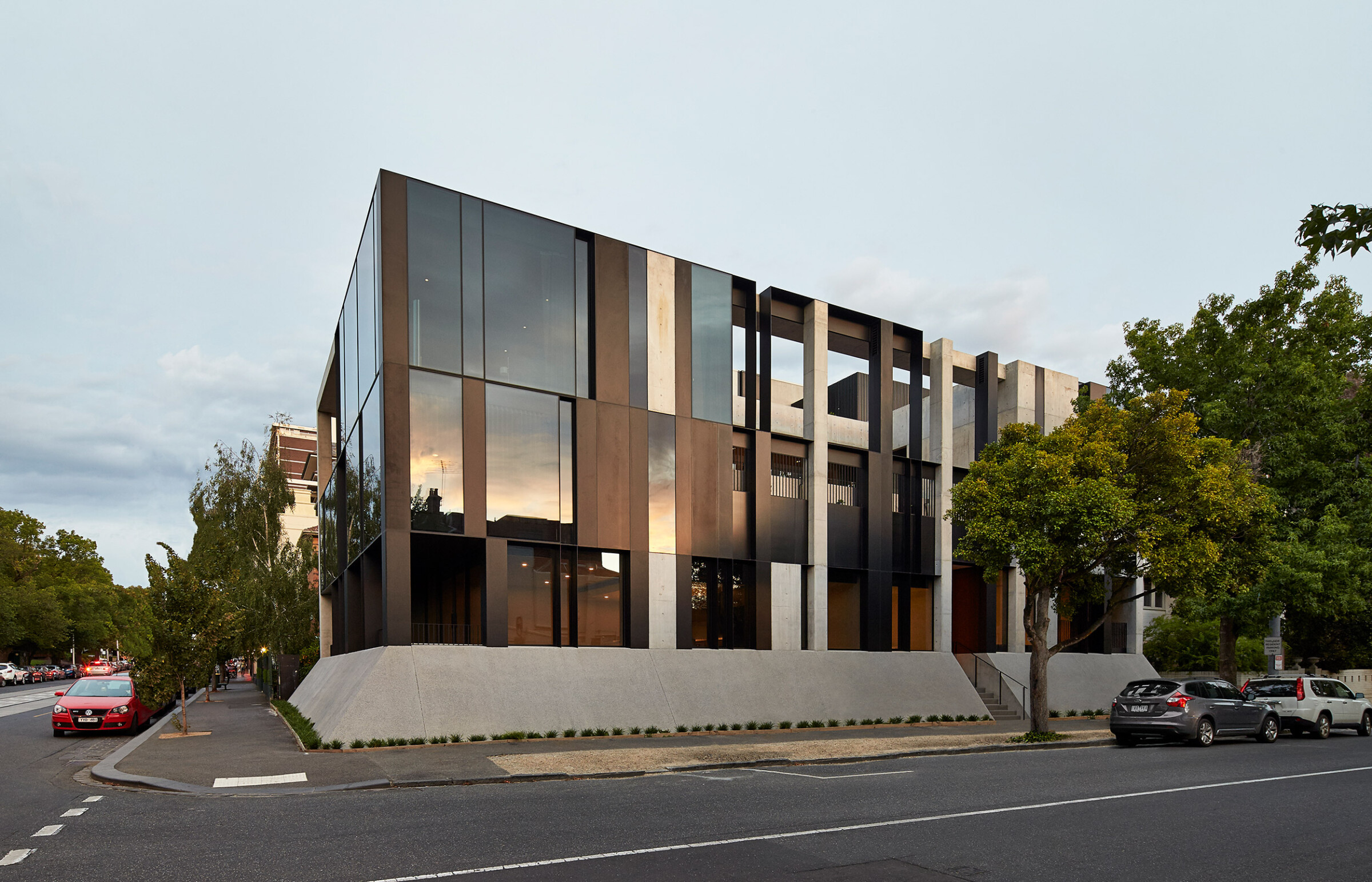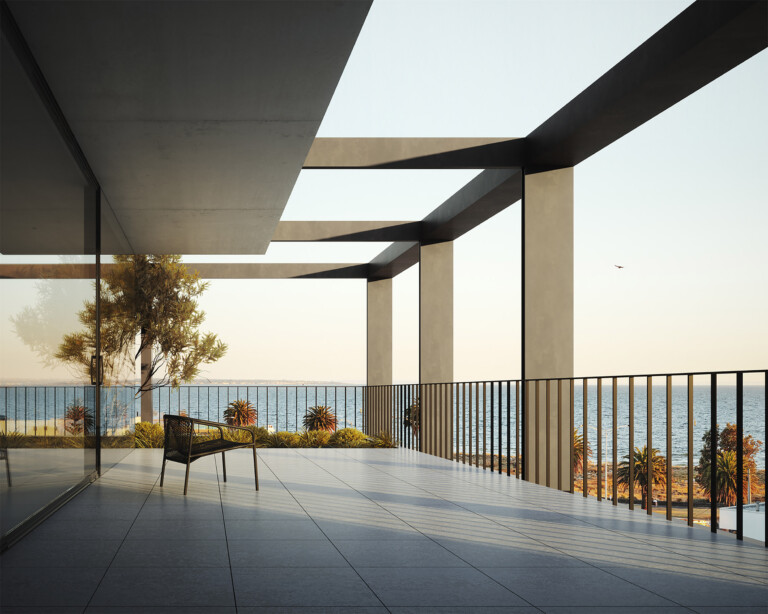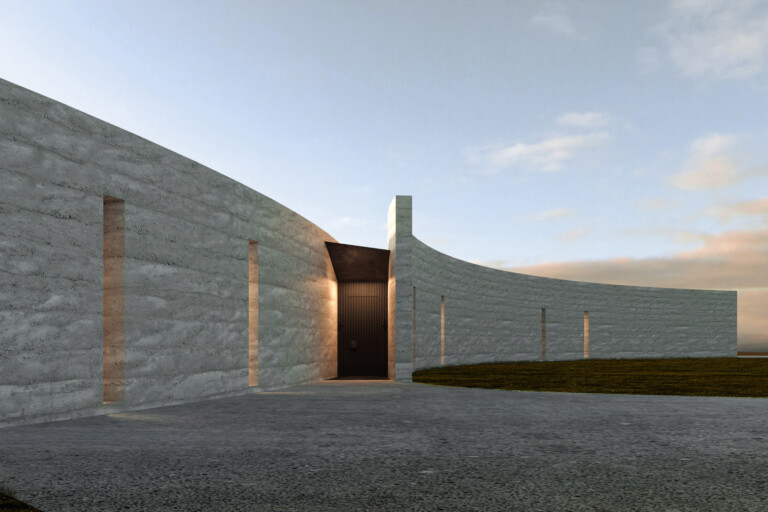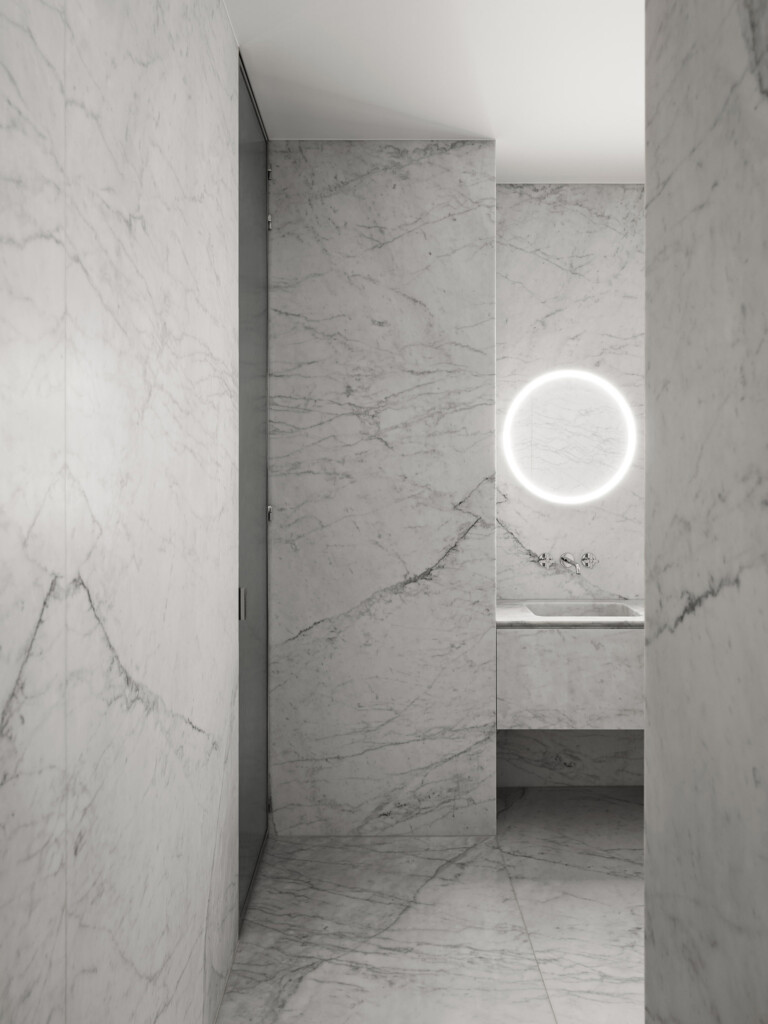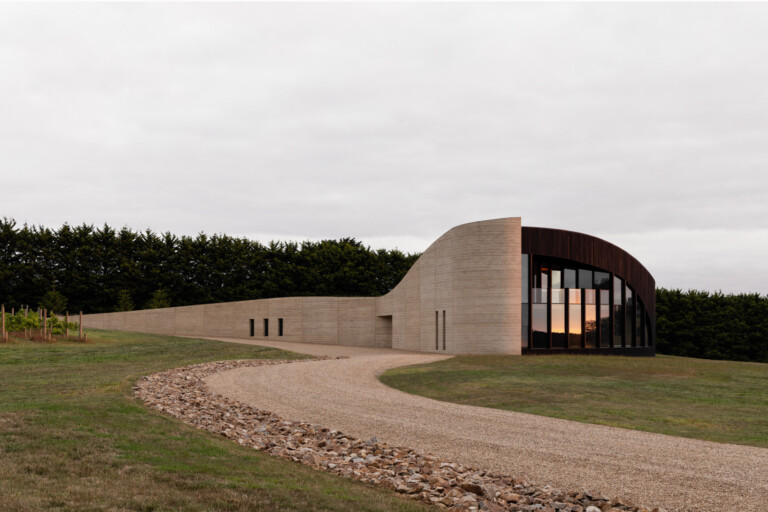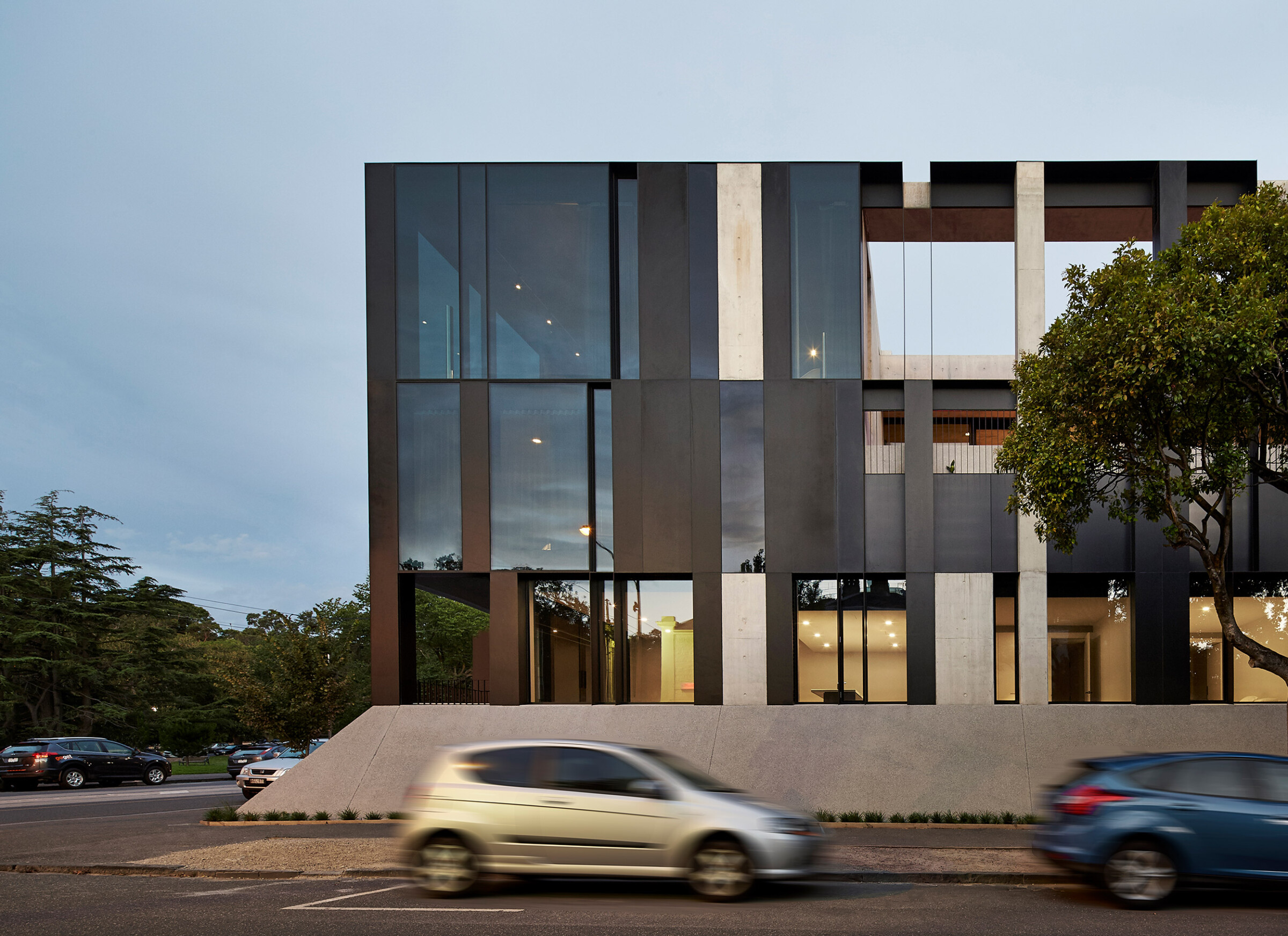
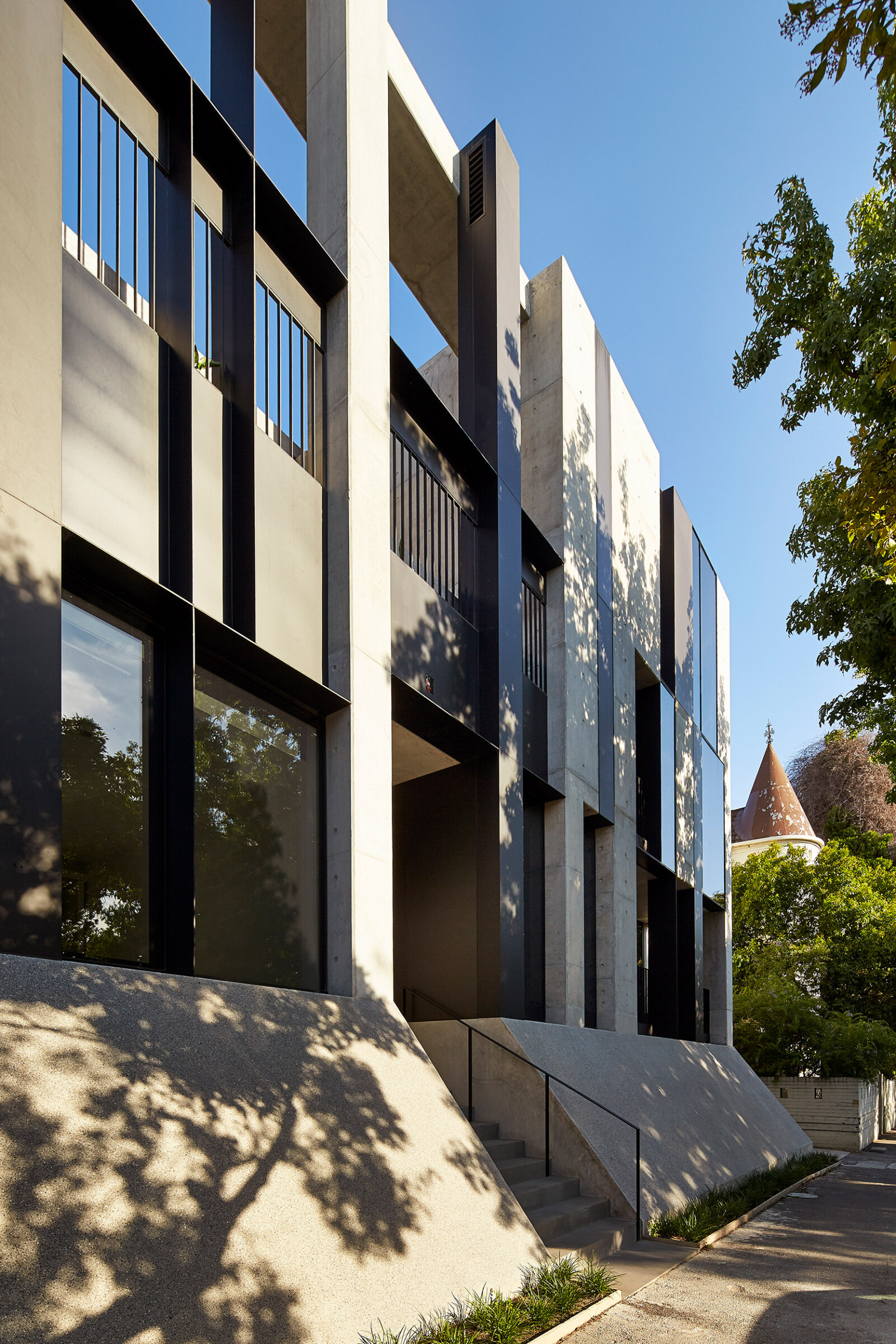
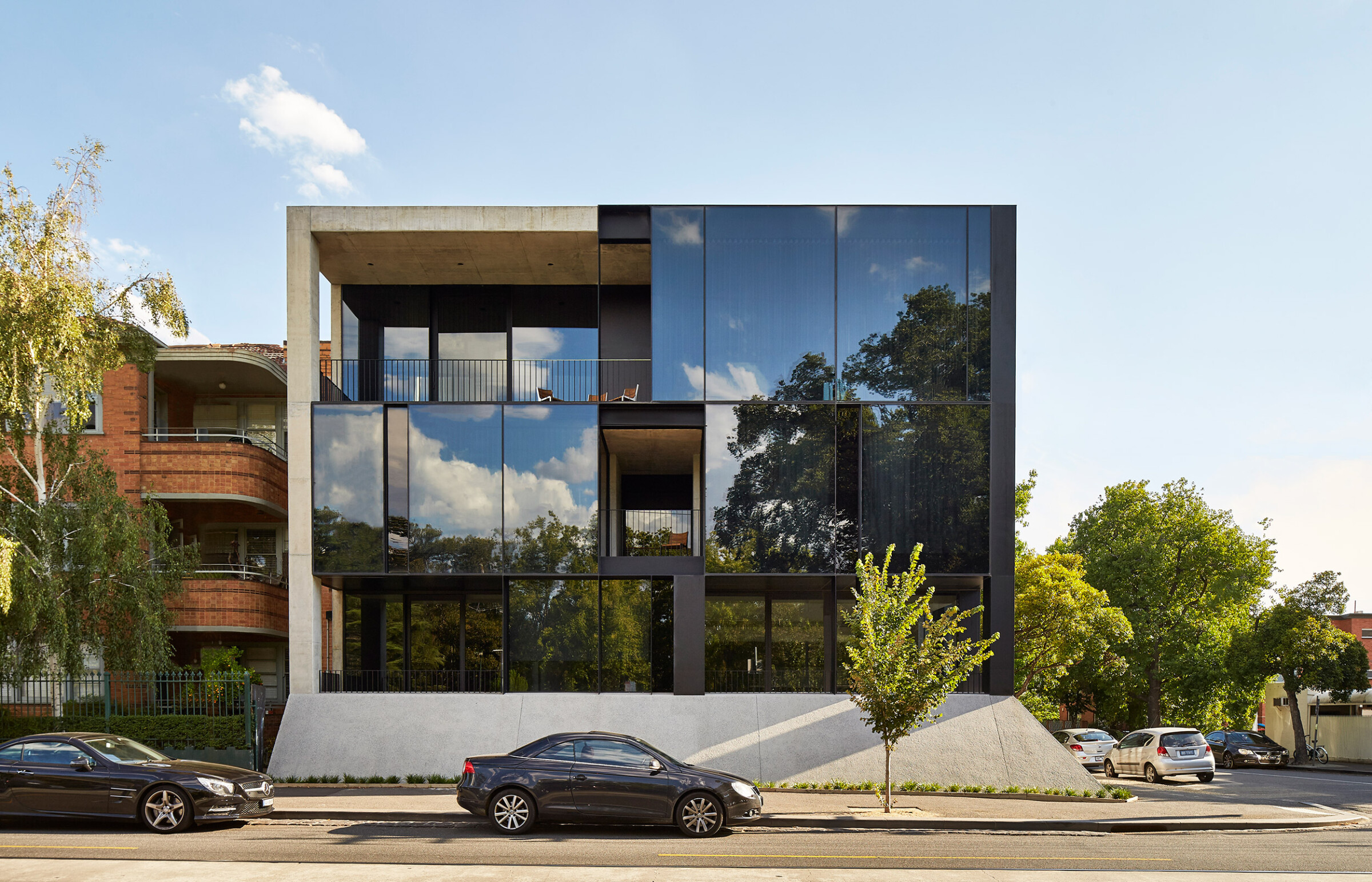
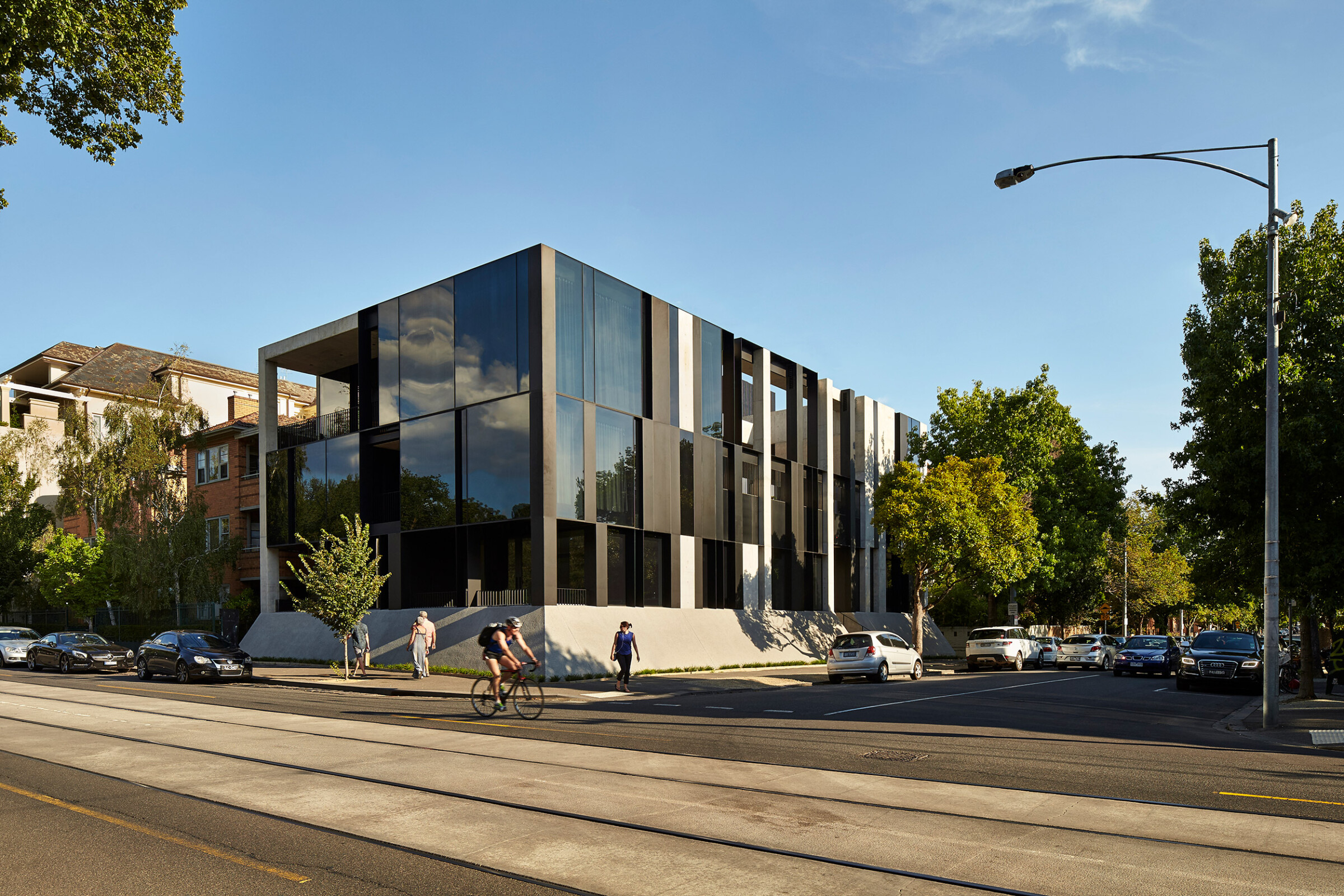
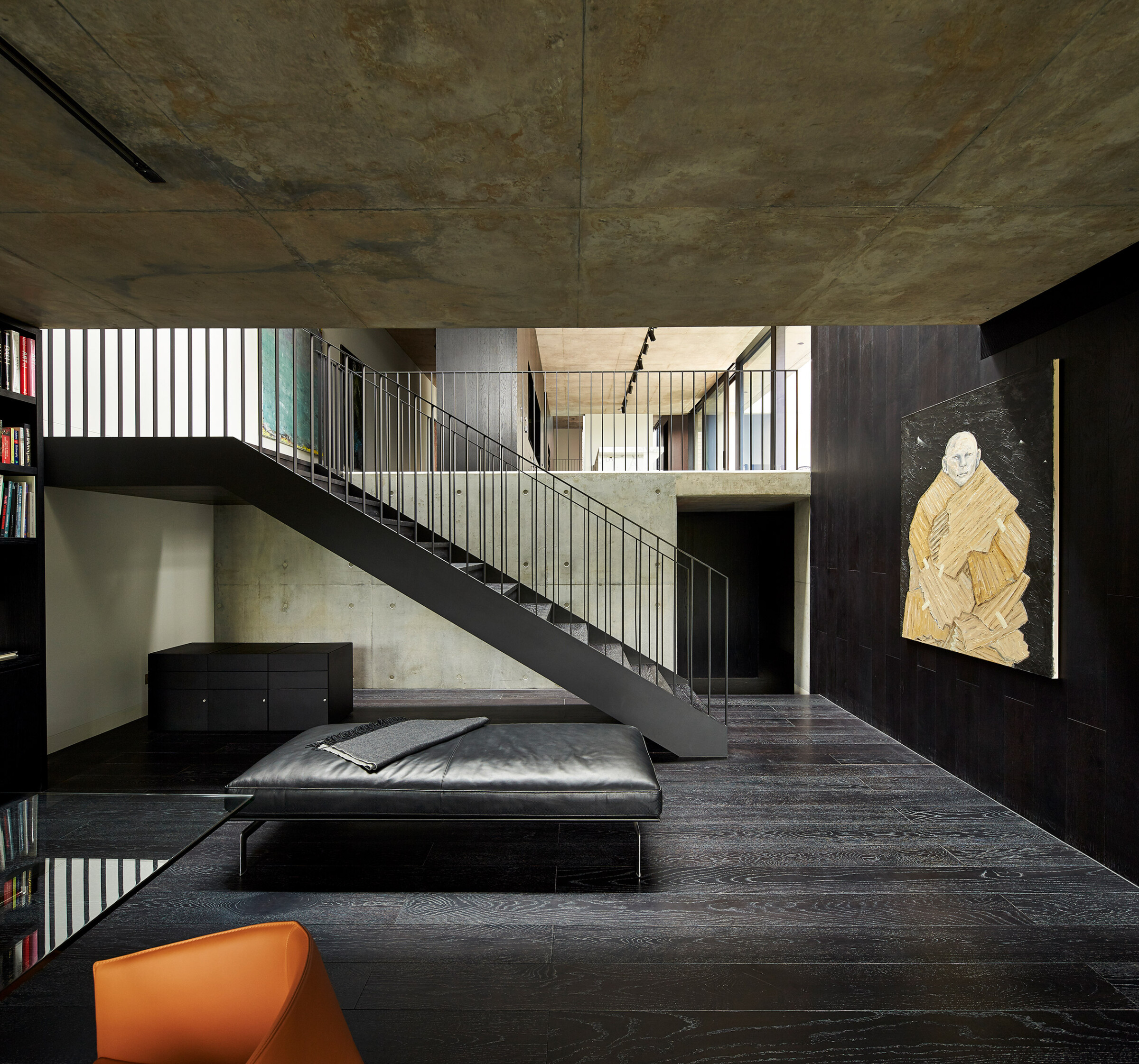
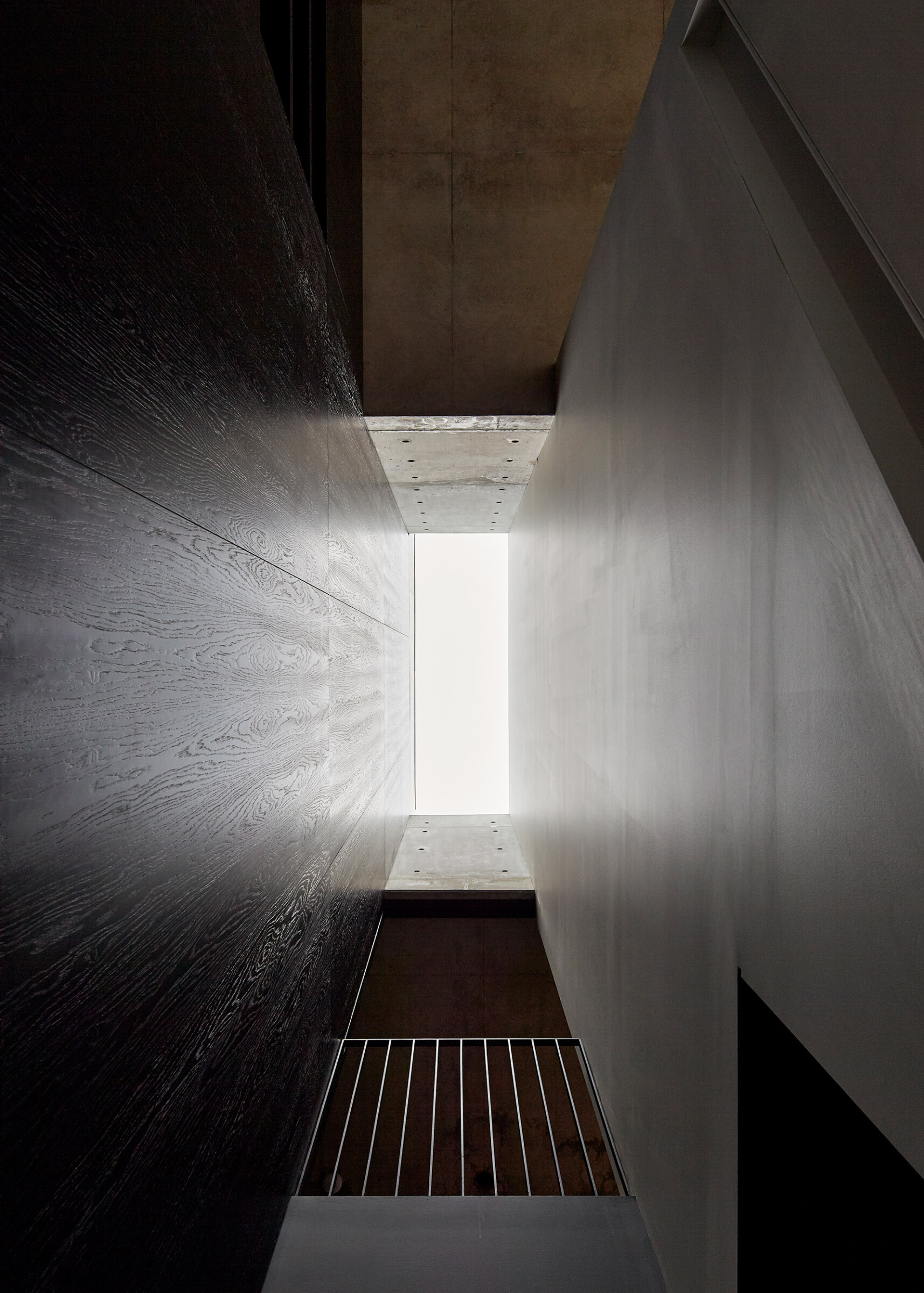
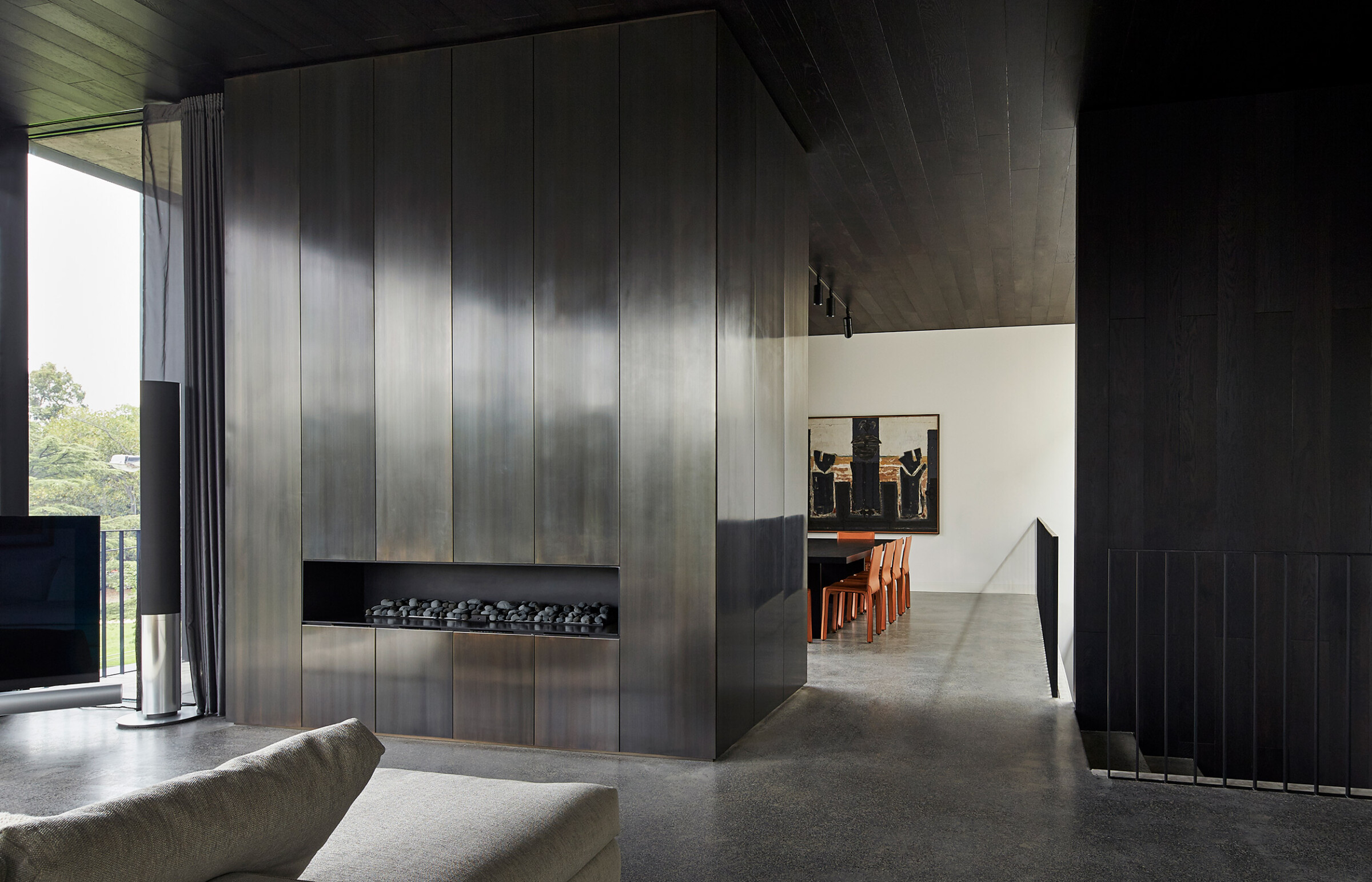
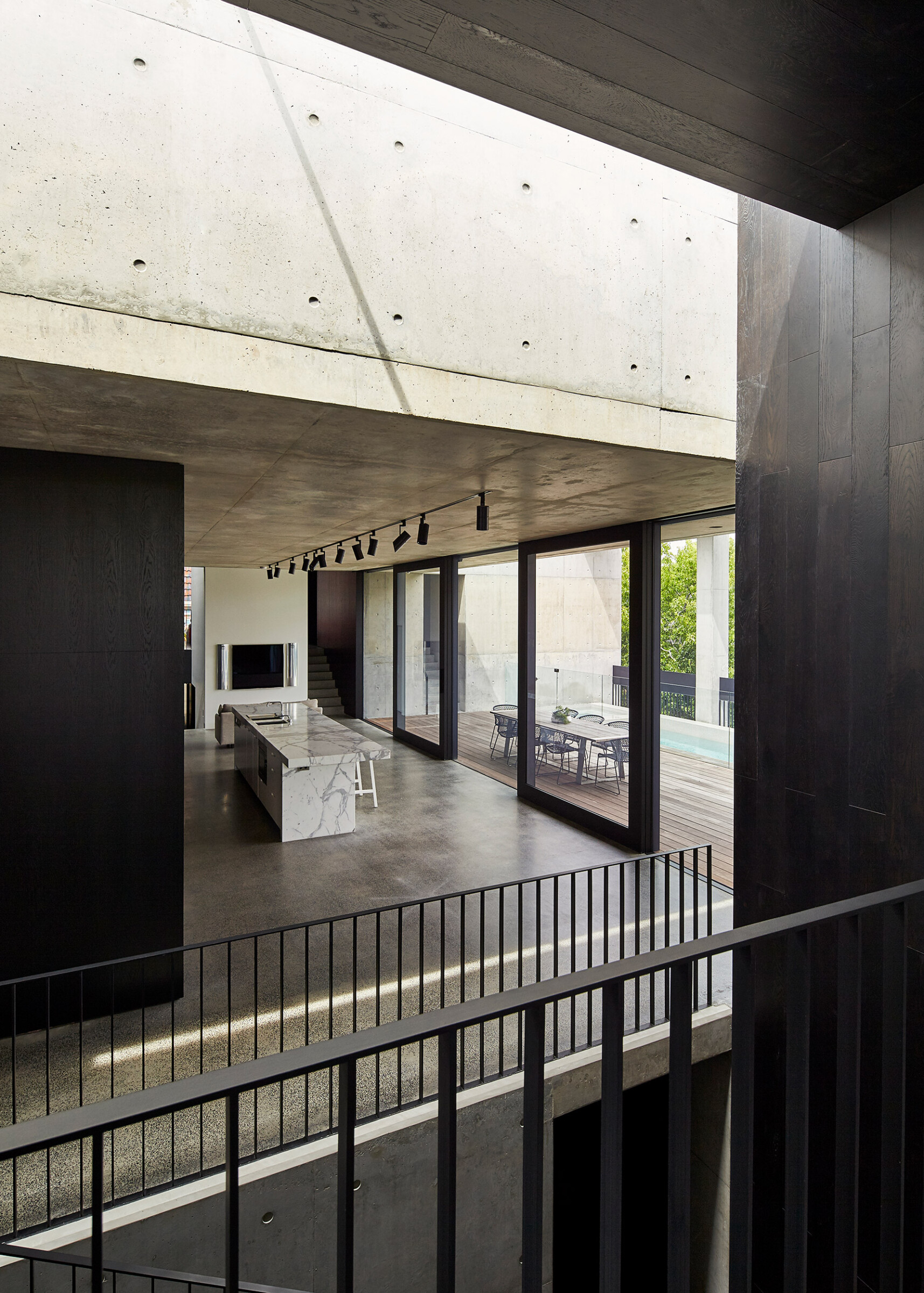
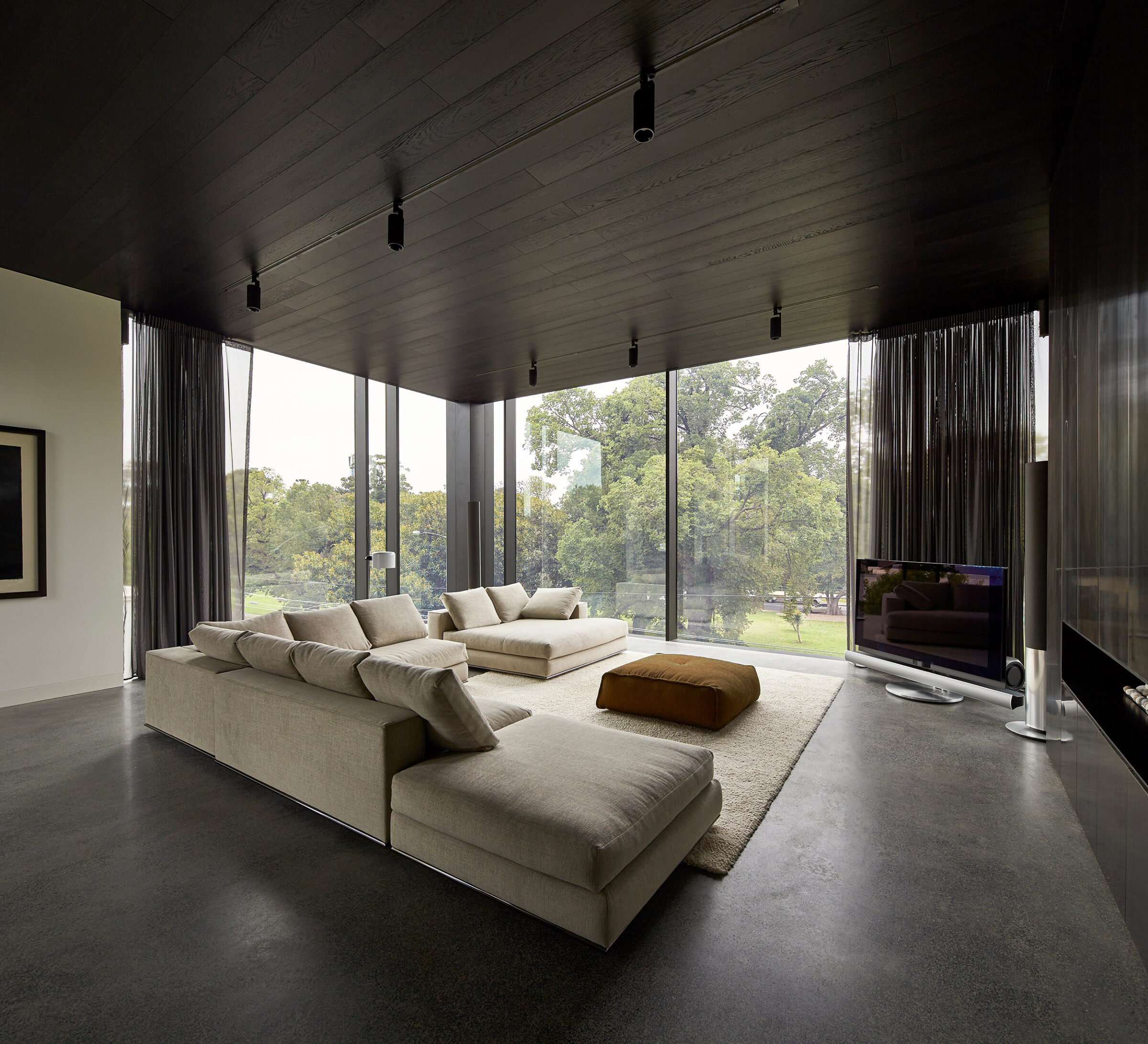
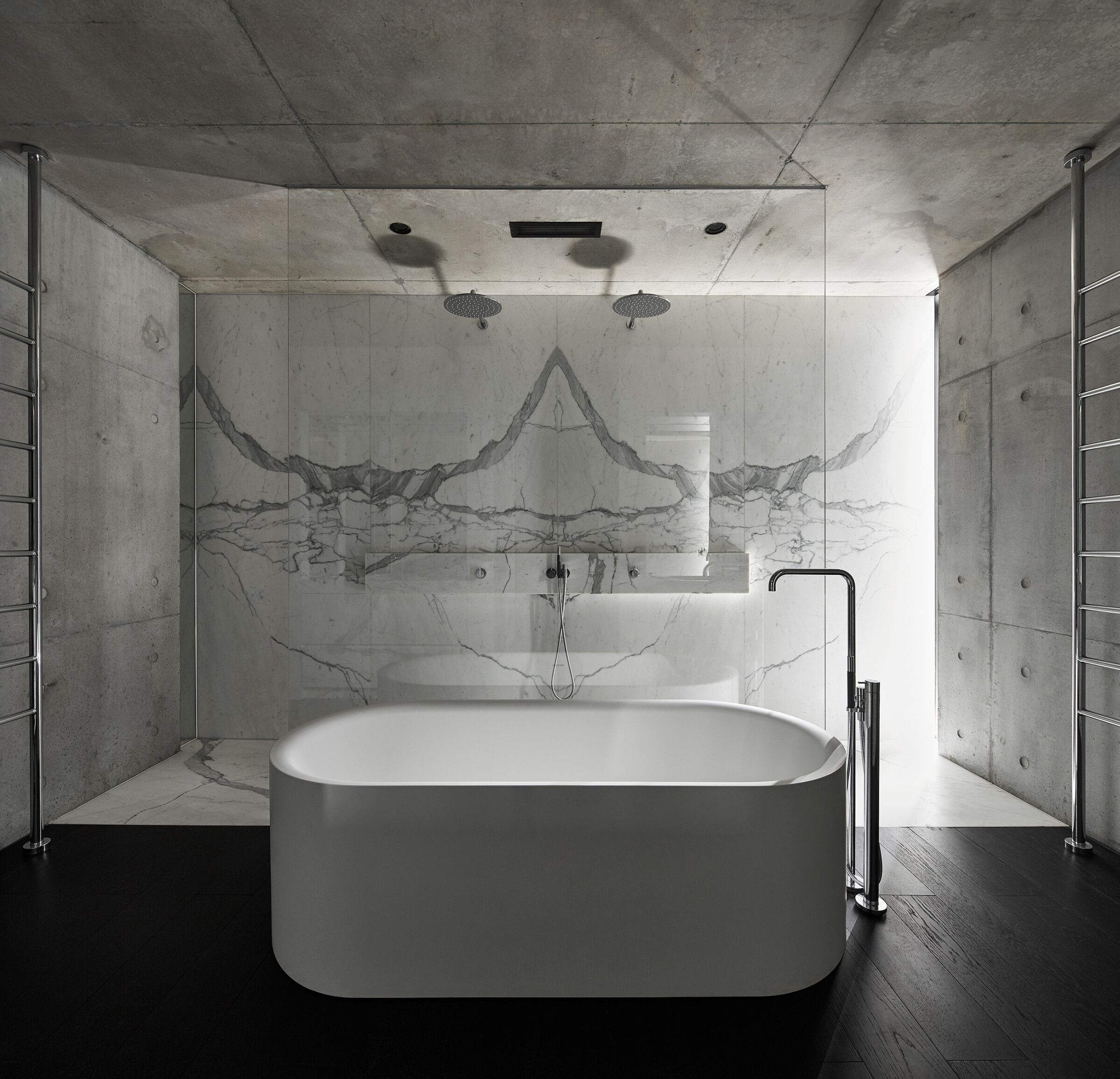
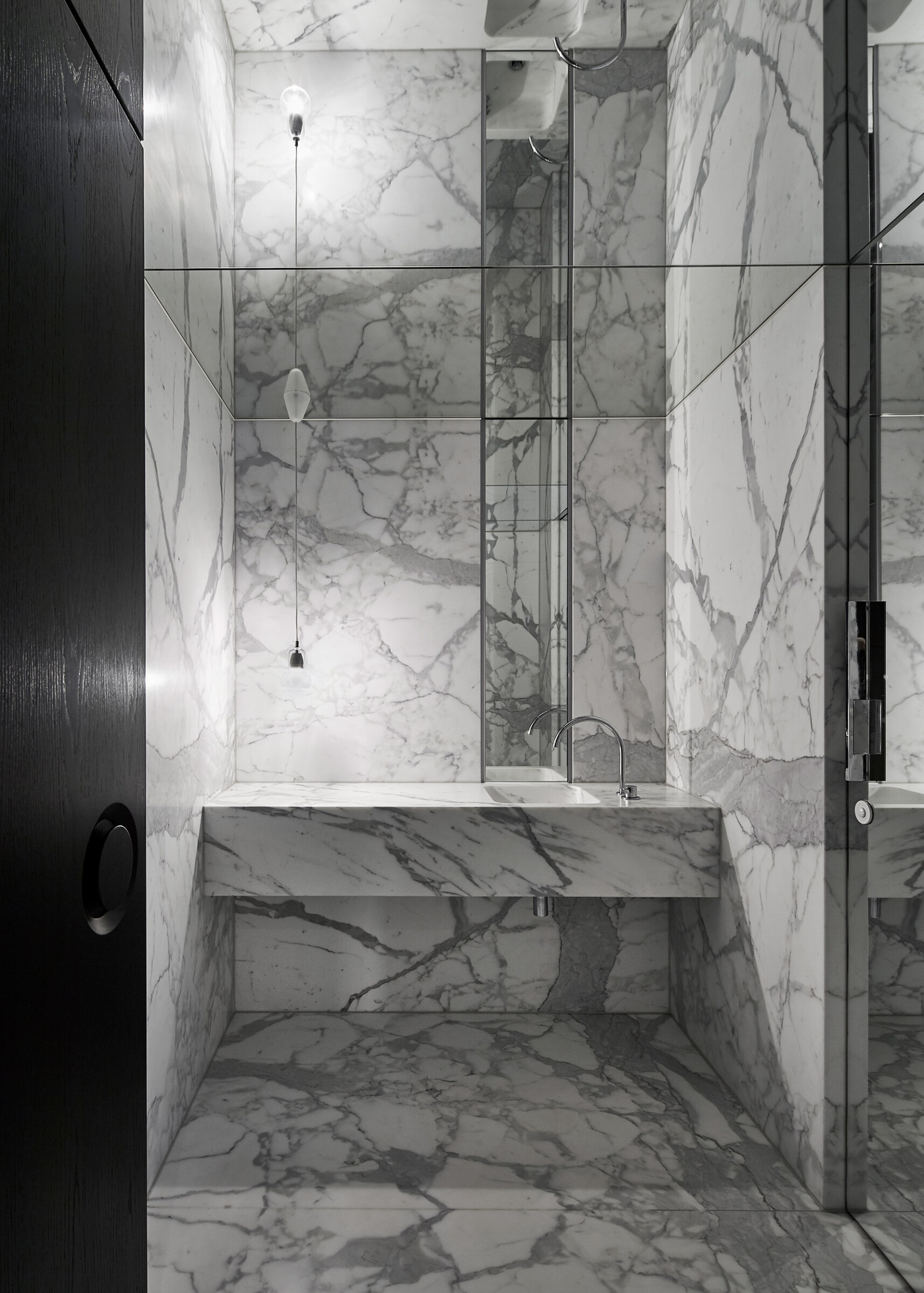
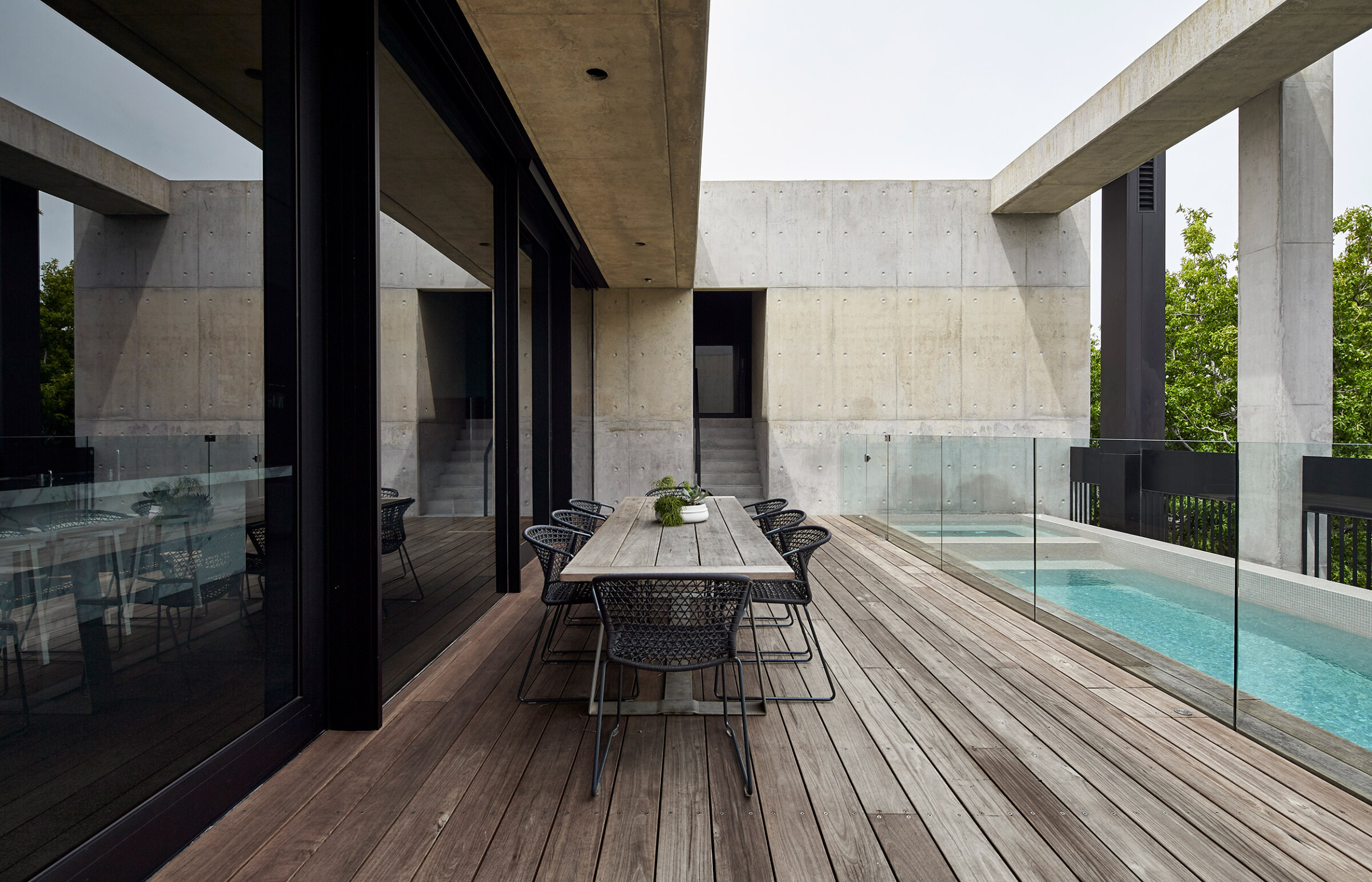
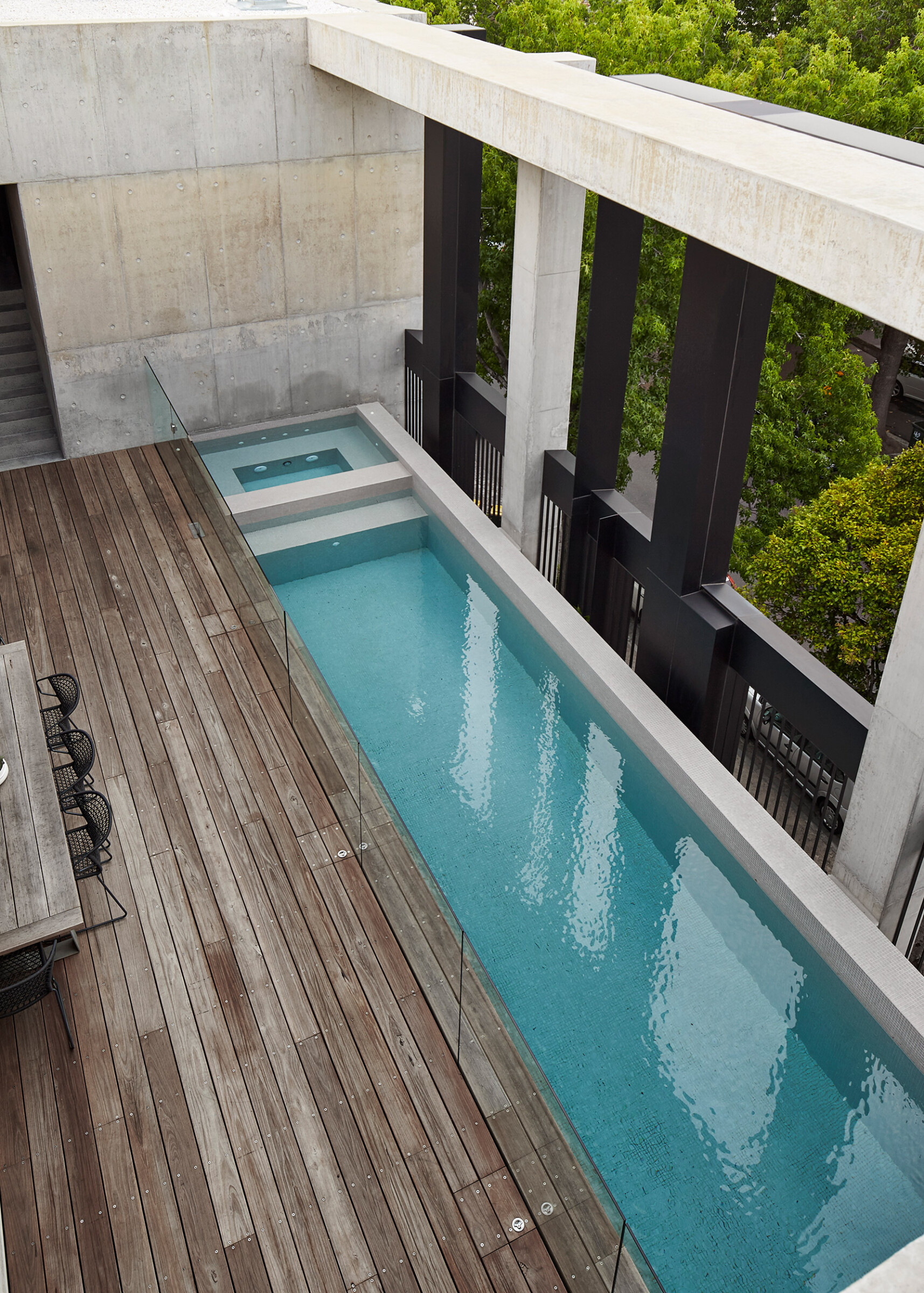
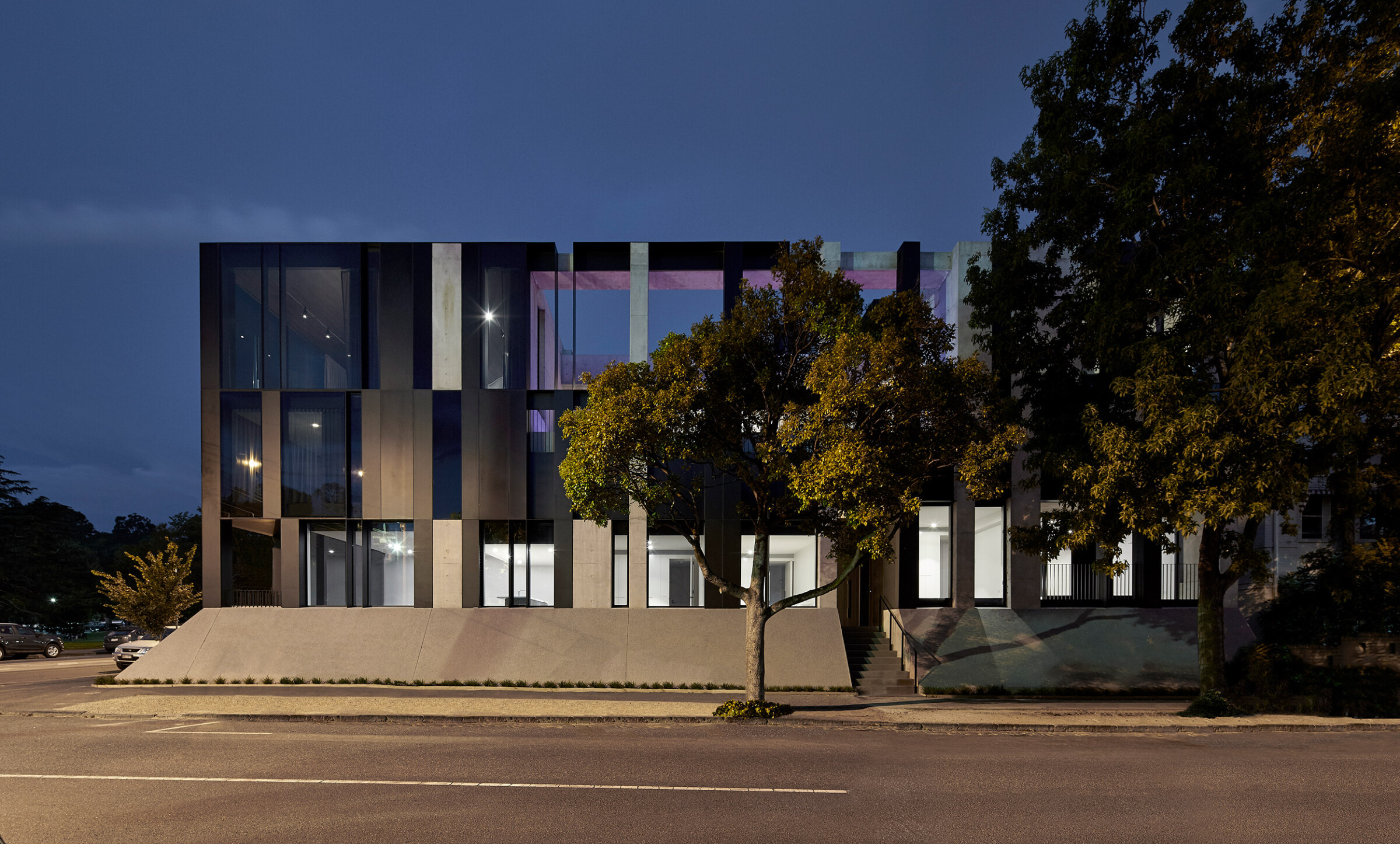
Domain Road Apartments
The height and scale of the Domain Road Apartments respond directly to the surrounding context and aims to provide a subtle, rich and timeless addition to the streetscape. The building uses a limited palette of materials to create a shifting composition across three street facades in response to the changing context. The simple rectilinear form sits atop a textured concrete plinth that in time will be covered in greenery, visually connecting the building to the botanic gardens opposite and the surrounding fences overgrown with greenery. This podium offers a level of privacy, elevating the ground floor apartments above the footpath, and gives a stronger visual connection to the park and provides a more cost-effective solution to a fully submerged basement.
From the rear lane, the project presents a solid concrete mass with smaller apertures and cut-outs. Across the Millswyn Street facade, the solid mass gradually erodes, transitioning to a rhythmic composition of concrete, black metal and glass. The finer grain of this pattern gently references the scale of the surrounding fenestration and alludes to the work of contemporary artists Mondrian and Sol le Witt. In parts the facade erodes completely, evoking the idea of the building as a remnant and creates a series of semi-enclosed terraces. This sense of the building as a ruin is emphasised by integrated garden beds that will provide cascading layers of greenery spilling through and over the facades like the Gardens of Babylon.
The facade transitions around the corner to Domain Road and presents an almost fully glazed face to the park that reads as the inverse of the solid block at the rear. Recessed elements break up the mass of glass and provide a level of abstraction to the reflected image of the Botanic Gardens opposite.
A seamlessness between exterior and interior is created with the material palette of concrete, metal and glass carried through internally with a subtle shift as the black metal gives way to a textured black timber. This provides a sense of warmth and intimacy yet maintaining a link to the exterior. The layering of materiality continues as the internal spaces unfold, introducing stone, leather and blackened bronze to the composition.
The interiors read as an extension of the facade composition in creating a series of spaces that explore mass and void. This reflected the clients wish for the spaces to remain connected to a central kitchen yet provide varying levels of privacy. Vast open living areas and expansive light-filled voids, contrast with compressed private spaces, to create a range of engaging spatial experiences.
